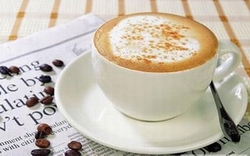 “Not for all the tea in China,” is a handy way to express extreme unwillingness to do something in the English language – because China is synonymous with tea.
“Not for all the tea in China,” is a handy way to express extreme unwillingness to do something in the English language – because China is synonymous with tea.But the way China is latching onto coffee culture these days, China’s relationship with tea may never be the same again.
According to a report published this week by Mintel, a retail consultancy, the number of coffee houses in China has nearly doubled in the last five years to over 31,000.
Over the same period, the number of Chinese tea houses rose by only 4 per cent to 50,000. Yes, there are still more tea houses than coffee shops. But the bad news is that their clientele are often elderly, which may not bode well for the future.
“Tea houses have targeted higher-end consumers with expensive teas, food and service, but lack differentiation, and there are few successful brands to meet the challenge posed by the rise of the café chains,” says Mintel, which predicts continuing slow growth of tea houses though also the emergence of tea house chains targeted at younger, lower-income consumers.
Even worse for the tea houses is the fact that popular coffee chains like Starbucks have branched out into selling tea drinks in China, where people adore coffee culture but do not much like the taste of coffee itself.

“Many cafés sell both tea and coffee, competing for custom from younger and lower income consumers who might respond well to a middle-market tea house chain,” the report says. The risk is that, in the end, it may be hard to tell the difference as both sell each other’s products.
Nearly a quarter of Chinese consumers chose to buy tea drinks even in coffee shops, Mintel says. And a quick glance at the menu of any Starbucks in China will show that many of the other drinks have not much coffee in them either; they tend to be more like milkshakes than espressos.
“Not for all the tea in China” should work as an expression of utter bloody-mindedness for quite a while yet. China may like its Starbucks – but not necessarily for the coffee.





